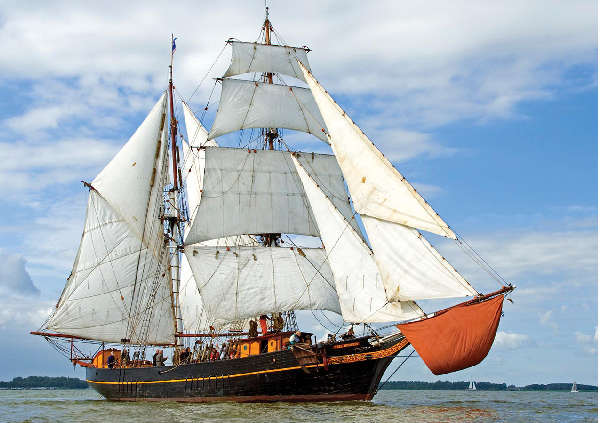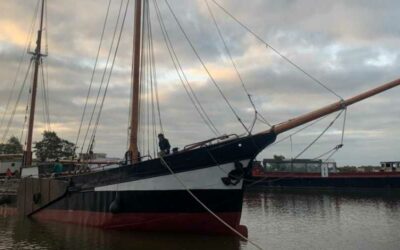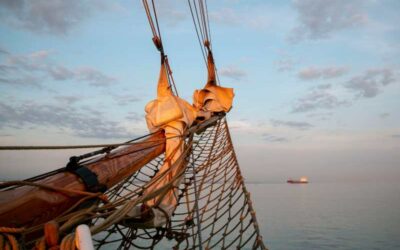This article is based on experiences Jorne Langelaan had while sailing as master on sailcargo vessel Tres Hombres.
Tacking is turning the ship, from having the wind blowing from one side of the ship, to the other side, and doing this by bringing the bow through the wind. There is another way of changing tacks, which is by bringing the ship through the wind with the stern facing the wind. This last manoeuvre is called jibing or wearing ship. Mostly when trying to reach a destination to windward the manoeuvre of tacking is being used, because you are being set less to leeward , and thus you loose less ground. On most squareriggers, only with very light speeds (below 2 knots) combined with a swell or waves, or very strong winds, instead of tacking, wearing ship will be used.
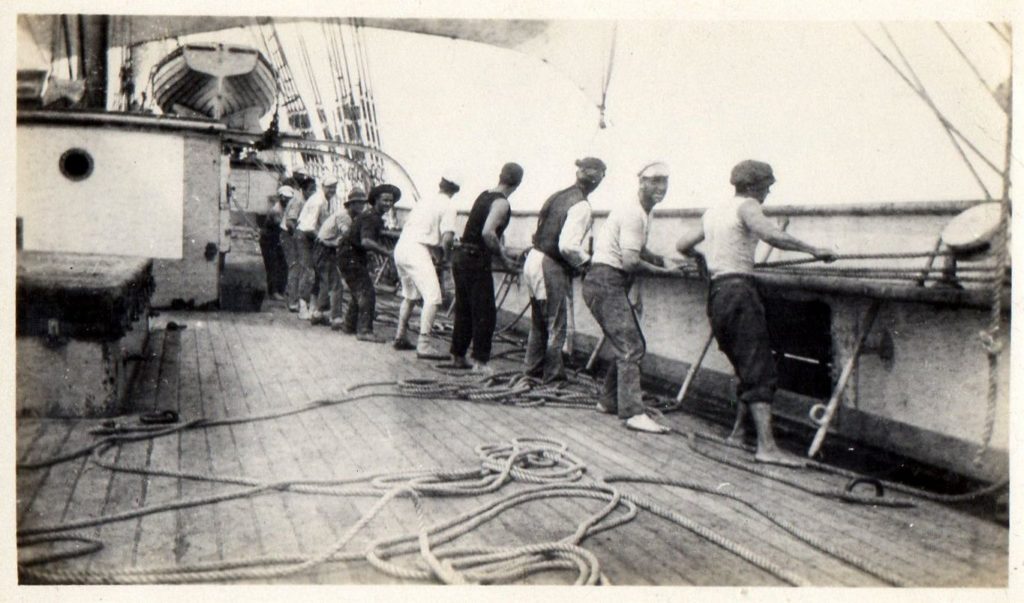
When the decision is made to tack ship. The crew need to prepare for the manoeuvre. Depending on what sails are standing the following preparations are being carried out: The braces, course tacks and sheets are being put ready, on the deck, to run free when eased or cast off. The boomstop is taken off the boom, and the leeward gaff preventer is shifted from its position forward to the aft. The slack on the leeward toppinglift of the mainsail is taken out. The leeward toppinglift of the course yard is eased and the slack taken out on the windward toppinglift of this same yard. The gaff topsail and the flying jib are being doused.
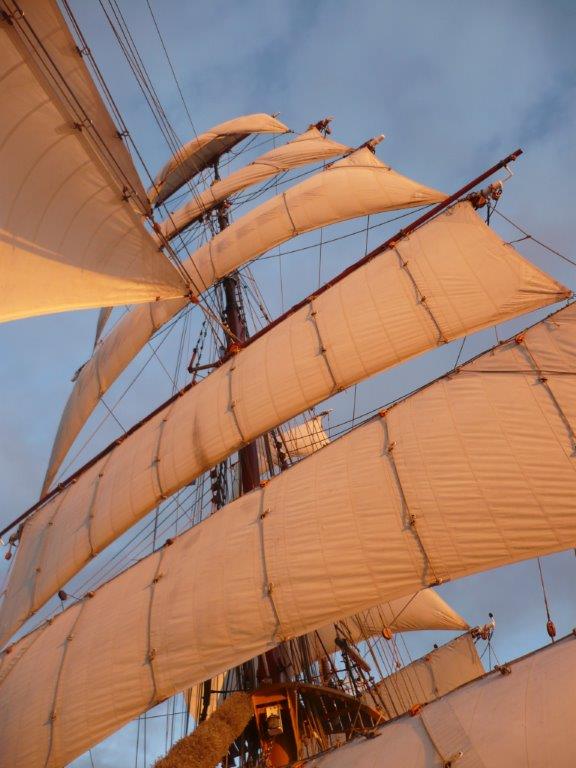
Now the deck is ready, the Master or Officer of the watch takes the helm, and falls off slightly to bring the ship at optimal speed.
The command is given READY ABOUT.
The headsails are being eased a bit to bring even more speed in the ship and reduce pressure on the foreship. Also, if there is a small crew, at this command the course is clewed up to reduce pressure on the bow, even more, and give the crew on deck less work while they have to brace around.
At the right moment (enough speed in the ship and a relative spell of low swells) the command is given HELMS A LEE, the wheel is turned to windward and the mainsail pulled aback to start making the turn.
When there is enough crew to separately man the foredeck and braces, the command is given TACK THE JIBS when the bow has just past the wind. If there is a smaller crew this can be done after bracing. The square sails are aback now, and pushing the bow even more through the wind.
At the moment the mainsail is filling on the other tack, the Officer in charge roars out: LET GO AND HAUL. At this moment the yards are braced around. When the crew is finished bracing, the mainstaysails are being tacked and sails are trimmed.
Finally the gaff topsail and flying jib are being set, and the ship is sailing on the other tack again.
